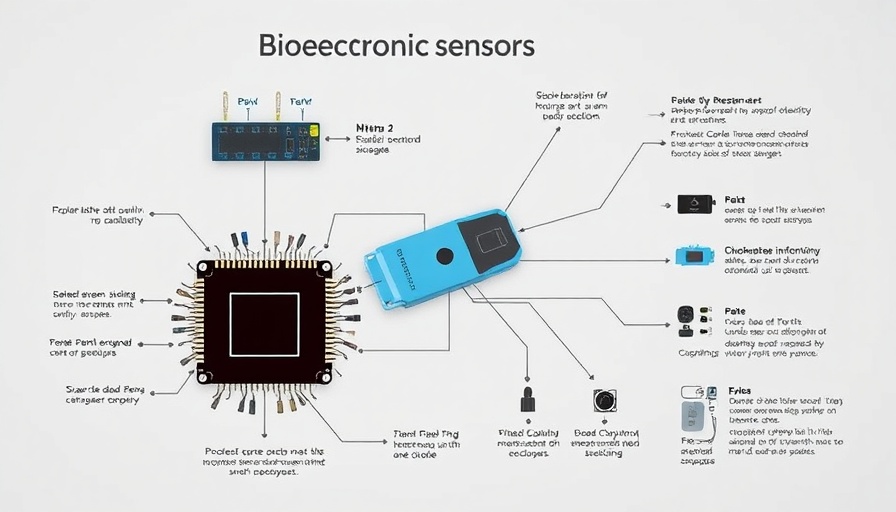
Revolutionizing Bioelectronic Sensors: A Leap Forward in Sensitivity
In an exciting development poised to change the field of bioelectronic sensing, researchers from Rice University have introduced a method that enhances the sensitivity of enzymatic and microbial fuel cells by three orders of magnitude using organic electrochemical transistors (OECTs). This innovative technique not only amplifies electrical signals significantly but also greatly improves signal-to-noise ratios, paving the way for the next generation of highly sensitive biosensors geared toward health and environmental monitoring.
How OECTs Work: Understanding the Technology
Organic electrochemical transistors are thin-film devices known for their exceptional sensitivity and functionality in aqueous environments. In their groundbreaking study, the research team integrated OECTs with two types of biofuel cells: enzymatic and microbial. The enzymatic fuel cells utilize glucose oxidase to convert glucose into electricity, while the microbial fuel cells harness electroactive bacteria to metabolize organic compounds to generate current. By coupling these fuel cells with OECTs, the researchers managed to achieve signal amplifications ranging from 1,000 to 7,000 times. This level of amplification is significantly higher than what traditional electrochemical techniques can provide, which usually enhance signals by only 10 to 100 times.
The Challenge of Bioelectronic Sensing: Overcoming Limitations
Traditional biosensors operate by directly interacting with biomolecules, which often presents challenges when the surrounding electrolyte environments are not compatible. The innovative approach taken by the Rice University researchers circumvents these limitations by electronically coupling fuel cells and OECTs, maintaining optimal operating conditions for both components. This separation not only enhances performance but also tackles one of the major hurdles in bioelectronic sensing technology.
Real-World Applications: From Water Safety to Wearable Tech
The implications of this research are vast. One notable application is in the detection of arsenite in water, which is crucial for ensuring water safety. The team successfully engineered E. coli bacteria capable of recognizing arsenite at concentrations as low as 0.1 micromoles per liter, producing a quantifiable response through the OECT-amplified signal.
Additionally, this technology holds the potential to revolutionize wearable health monitoring. With the ability to create low-power, highly sensitive biosensors, the applications in sports medicine and health diagnostics are exciting. For instance, detecting lactate levels in athletes' sweat can provide valuable real-time insights into their metabolic state, leading to better performance monitoring without the need for complex electronics.
Bright Future Ahead: Predictions and Opportunities
As we advance into an era where health monitoring and environmental safety are paramount, the integration of organic electrochemical transistors into bioelectronic devices points to a significant leap forward. Researchers suggest that by fine-tuning the interactions between OECTs and fuel cells, we can design specific biosensors tailored for various applications, enhancing everything from medical diagnostics to robust environmental monitoring.
This promising research highlights not only the technological innovation but also a commitment to improving health outcomes through science. As we witness further developments in this field, it becomes clear that efficient, cost-effective biosensor technologies may soon become commonplace, benefitting society at large.
Such advancements remind us of the importance of integrating biology and technology in innovative ways, and how interdisciplinary efforts can lead to powerful solutions for real-world problems, ultimately fostering a healthier, more sustainable future.
 Add Row
Add Row  Add
Add 


Write A Comment